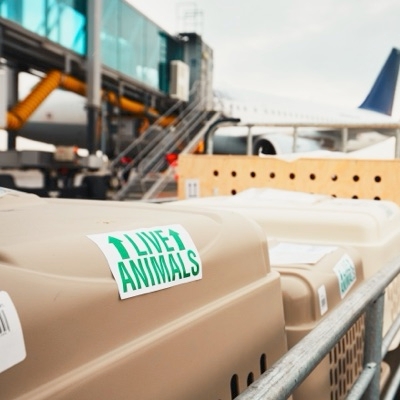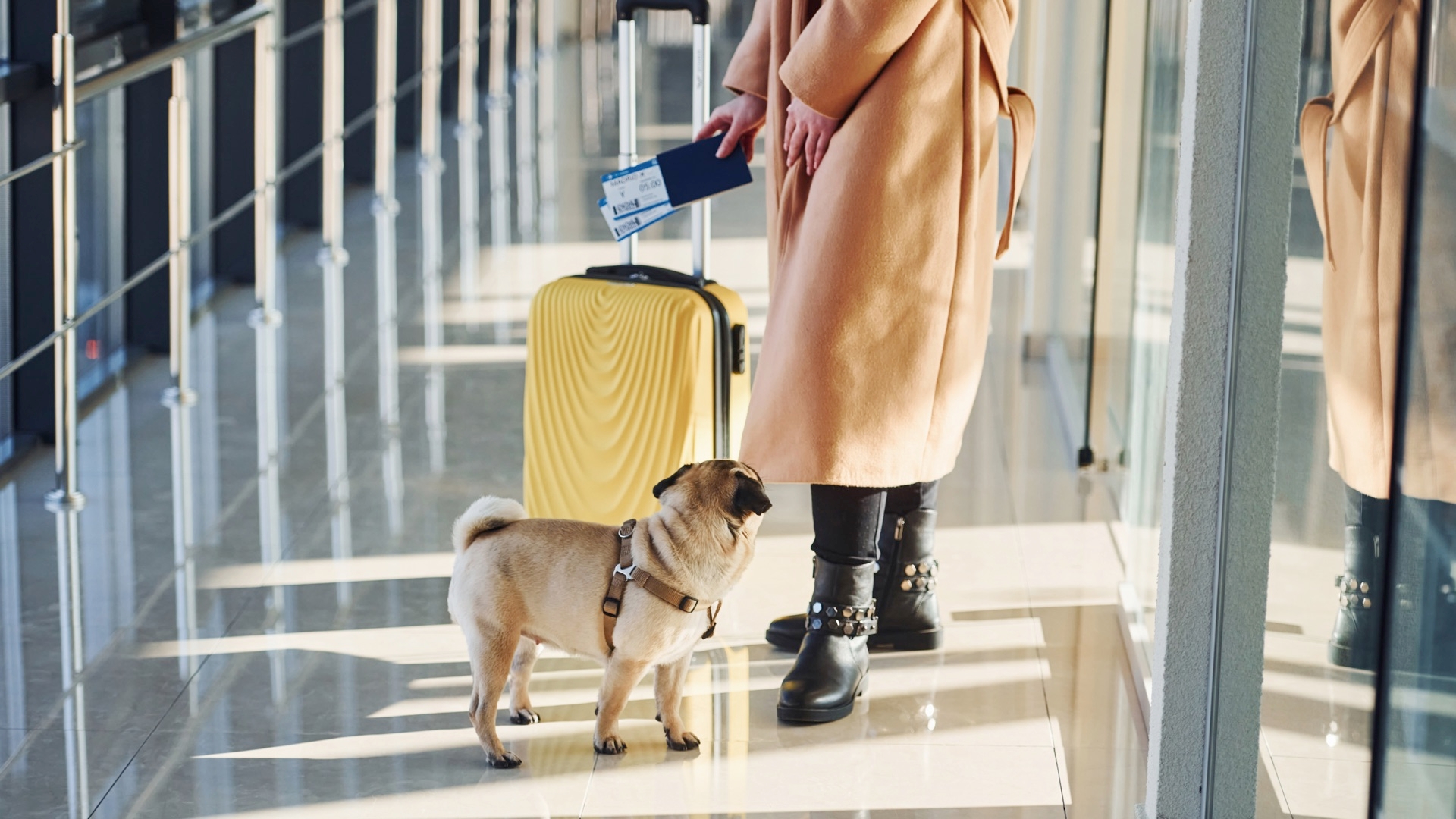Air Travel Tips For Your Dog:
Summary:
Traveling by air with a pet can be a challenge. With proper consideration, some patience and understanding, you can help reduce the stress both you and your pet may experience during your air travel trips.


Traveling by air with a pet can be a challenge. Placing an animal in cargo has a mountain of risks associated with it. If you have a dog small enough to fit comfortably in an airline-approved carrier that slides under the seat in front of you, it's much more manageable. If your dog is not a service animal or small enough to travel in-cabin, you're almost better off driving to the destination.
There are horror stories about the trauma animals have suffered during air travel by cargo. There was a period when it seemed these stories were prevalent in news headlines. Most airlines have since attempted to improve their service to animals in shipment, but there are still many factors they cannot control. To begin with, the stress from simply being separated from you can be devastating to a dog. Add to that the air temperature, which will usually be extreme to one end of the thermostat, and the noise of it all is a definite recipe for disaster. God forbid you should hit turbulence while flying with a pet in cargo! I can't even imagine what goes through their minds being isolated, cold (or hot), and dealing with the loud sounds of the jet engines and the banging and rattling of other cargo items! By the time you land, you have an animal who is a nervous wreck at best. I would never recommend flying with an animal that has to be taken to cargo.
If you have a small dog, it can still be challenging, especially if the dog has never flown before and is an adult. But if they know you are right there with them, it helps. The first thing you need to do is find out the airline's policy on traveling with pets. Each airline is different. They have restrictions on the types of pets, size of the pet, the number of pets allowed per carrier, and carrier requirements. But all airlines have one common rule; the animal is NOT to be removed from the carrier while in flight. Granted, while traveling with my 3-month-old Chihuahua, I would stick him inside my jacket and hold him during the flight on the first 3 or 4 trips he took to help ease his nervousness. But this was all done on the down low; added attention was not what I needed! I avoided letting the person sitting next to me be aware of what I was doing, let alone any flight attendants!
Once you know the airline rules, research the airports you will be in. Pay close attention to the airports where you will have long layovers. Many airports are pet friendly enough to provide pet relief stations. You typically need someone's assistance to reach these areas, but if the dog needs a potty break, he can get one. I trained my dog to use puppy pads so I could take him to the restroom and put him on a puppy pad if a pet area was unavailable. Or, while sitting at the gate, I could lay down a puppy pad under my seat to help avoid unwanted accidents. Some airports tag themselves as pet friendly and will allow you to put your dog on a leash while in the terminal. Restaurants can be another challenge, but most will allow a pet in as long as it remains in the carrier and on the floor. Others are friendlier and may even be willing to provide a bowl of water. Traveling with your pet regularly will teach you where your best pet-friendly options are.
If this is the first flight or first trip for your pet, do not go buy a carrier the night before and then stuff the dog in it the next day for the first time and expect to have a good trip. Buy a carrier early enough to let the dog get used to it beforehand. Leave it in the house with the door open so they can explore it. Place a familiar blanket or t-shirt in it, along with a toy and chew stick. Chew toys can help allow the dog a way to release nervousness. Since they will spend multiple hours in the carrier, being comfortable and feeling secure will help the trip.
One of the best things you can do is limit what your dog eats, especially on the first trip or if your dog is a nervous traveler. We have one Chihuahua, my husband, who does not travel as much as my little guy. My husband took him on his first trip, which was a horrible experience for both of them. Not quite realizing how nervous he would be, my husband allowed him to have breakfast just before leaving. Well, let's just say there was a very stinky and messy incident that took place before boarding. Had the incident happened while on the plane, it would NOT have been a good scene! Limit what you give your dog to eat if they are not experienced with air travel. If your trip will take most of the day and you want to feed him something, feed him at least 3 hours before leaving for the airport. The best solution is to avoid feeding them until you get to your destination. If nerves do become a problem, they won't get hungry anyway.
Withholding food is easy enough, but withholding water is another story. You will want to be able to offer your dog a drink at least once during the trip. Nerves can cause them to get thirsty, which, if not satisfied, leads to more stress. Allow enough water to keep him hydrated. You can find collapsible bowls or measuring cups that work excellently for traveling. When not in use, they collapse flat for easy storage.
Another good trick is to allow time to stop by a park before you get to the airport. Let your dog out to run off some energy and take care of business before getting to the airport. This will, at the very least, allow them to empty the bladder! Releasing some energy is also good since it might help them calm down once you get to the airport. If you anticipate your pet being nervous, you can also check with your veterinarian about a mild sedative to help calm the nerves. Although I personally have never had any luck with this option. Your presence, being attentive and reassuring, and letting them know that everything is ok, can frequently be enough to help with the nervousness. If you are familiar with essential oils, you may be able to provide some relaxing and calming aromatherapy during the trip also.
Don't be afraid to let people know if the pet is nervous and should be left alone. In my experience, most flyers are aware of this and cautious about petting unfamiliar animals. Children are my biggest problem; not all of them have been raised to understand the boundaries of approaching unknown pets. If the parent is not keeping an eye on them, they can get very excited about seeing a dog in the airport and try to pet him. If your pet is nervous, even if you do not believe they would bite someone, play it safe and politely ask people to leave him alone. The last thing you need during your trip is a stranger who has been bitten by your otherwise friendly and loving companion! Stress can have an enormous impact on their normal behavior.
Considering these primary concerns and always remembering patience and understanding, you can help reduce the stress you and your pet may experience during your first air travel trip.


